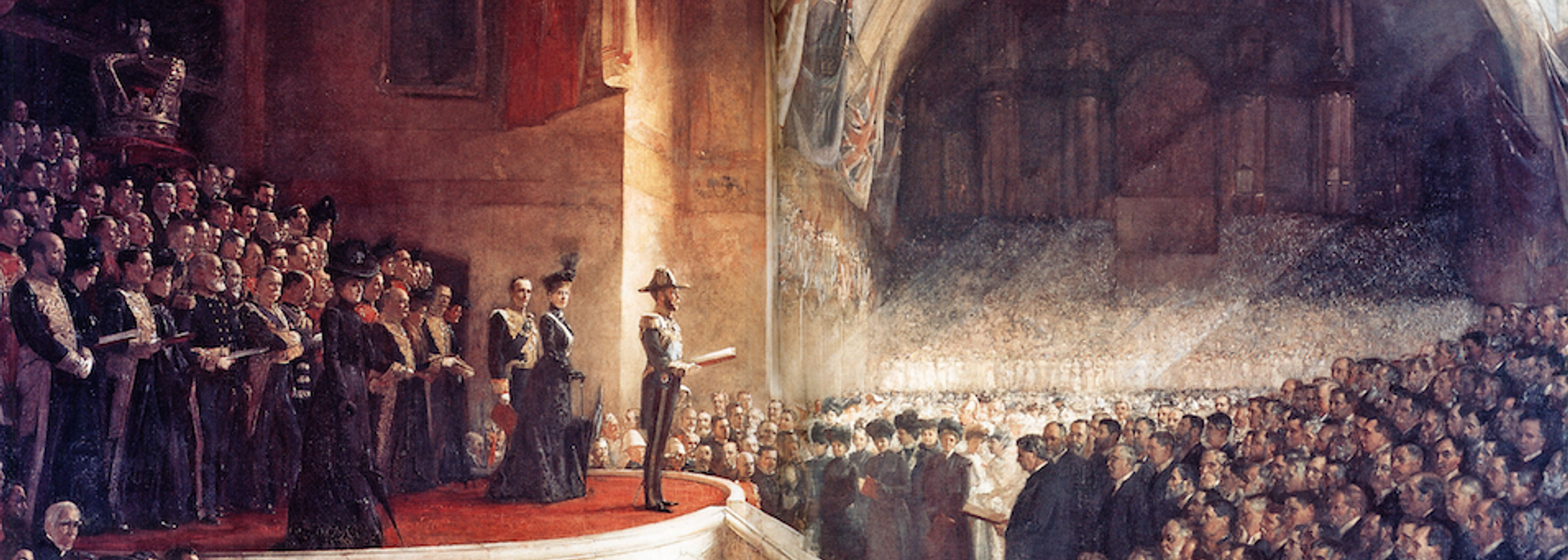Opening of the first Australian Parliament
Continuing our history lesson of the great indoors, Len Johnson takes us Down Under to find out why Australian sports and politics have more in common than you might think.
Indoor athletics is often conducted in makeshift venues. Aircraft hangars, storage warehouses, ice rinks and school gymnasia are just some of the spaces into which an indoor track has been squeezed.
But Australia is surely the only country that can boast that its first indoor meeting was held in the same venue as the inaugural sitting of its national Parliament.
A need for space aside, indoor athletics and Parliaments do not seem to have much in common. Both are sometimes compared to a circus – indoor athletics favourably, in admiration of the way several events are conducted simultaneously with the precision of a three-ring circus; parliamentary debate unfavourably, for its lack of decorum.
Australia, with its temperate climate, is noted for many outstanding outdoor venues. The Melbourne Cricket Ground was the main stadium for the 1956 Olympic Games and regularly seats 100,000 spectators for major Australian Rules football and international cricket matches. Sydney, likewise, has the Olympic 2000 Stadium and the Sydney Cricket Ground.
In the early 20th Century, however, there were very few indoor facilities. One was Melbourne’s Royal Exhibition Building, constructed for a world exhibition in 1880 by a state awash with gold rush wealth. The Exhibition Building, as it has been known to generations of Melburnians since, hosted the first sitting of Australia’s Federal Parliament in 1901 and, 30 years later, a Board Track Sports Meeting, the first indoor athletics meeting in Australia.
Australia debated the basis for a federation of its constituent states for so long, that it is something of a surprise that when agreement was finally reached, there was no place for a national Parliament. It would not be until 1927 that a home for the Parliament was established in Canberra.
For the opening of the first Parliament on 9 May, 1901, the Exhibition Building was the chosen venue. According to a history on Museum Victoria’s website: “Prime Minister (Edmund) Barton wanted it to be as inclusive as possible. No other public building could accommodate such a large group of people.”
A contemporary newspaper account describes the atmosphere as “radiant” with light streaming through the building’s central dome illuminating “the vast spaces of the building and the great sea of faces with a bright Australian glow.”
The scene was depicted by the famous Australian artist, Tom Roberts (main image).
There was no radiant light, nor bright Australian glow, on the occasion of the first Board Track Meeting on 17 October 1931, but the occasion was hailed “a great success”.
Accounts of the meeting give scant detail about track configuration, but it must have been pretty tight as one correspondent reported that “the manner in which the athletes accustomed themselves to the sharp bends […] raised the crowd to a great pitch of excitement.”
The meeting was organised along interclub lines by the Victorian Amateur Athletic Association’s affiliated clubs sports committee. The committee secretary, Bert Schober, was acclaimed as one of the association’s “most enterprising officials.”
Schober was obviously aware of indoor meetings conducted in the US and Europe and wanted to develop a series of such competitions in Australia. He envisaged state and national indoor championships.
The program for the first meeting had 18 club teams divided into four sections and competing for points. Among the 34 events were the 60, 440 and 880 yards, an 880 yards walk, the high jump and the pole vault. The program also advertised ‘musical interludes’.
Another meeting was held at the Exhibition in 1932 before two more were held at a new venue, The Wattle Path Palais de Danse & Café in seaside St Kilda. Competition was still conducted along club lines, but there was a changed emphasis on the individual stars.
“A Night With the Champions”, a preview headline in Melbourne’s Sporting Globe promised of one of the Wattle Path meetings. The preview highlighted the participation of 1932 and 1936 Olympic hurdler Alf Watson and of national champions Fred Woodhouse (pole vault) and Thorold Irwin (880 yards).
Pragmatically, the program promised an event every two minutes, “followed by dancing to 11:30”.
There were further Wattle Path meetings in 1933, but despite these promising beginnings, indoor athletics never took off. Perhaps the timing of its introduction, as Australia was experiencing the worst impact of the Great Depression, counted against it.
An ill-fated attempt to start a sponsored series in the 1990s aside, the subsequent history of Australian indoor athletics is an international story. In the 60s, Ron Clarke, Ralph Doubell and others were stars on the US circuit and Australia has been a consistent – and relatively successful – supporter of the IAAF World Indoor Championships.
The Exhibition Building remains an iconic Melbourne landmark and its illumination was one of the highlights of the city’s recent annual White Night display. As for the Wattle Path, its spacious potential saw it successively become a film studio, a café (again) and then the St Moritz ice rink (notice something?) before, like the dreams of an indoor circuit, it went up in smoke in 1982.
Fire, both accidental and otherwise, is a common element of property development in St Kilda. The site was derelict for 10 years and is now a hotel. Its only other athletics link was as venue for a season launch in the late 1990s. Luckily, Aussie discus thrower Benn Harradine has some grand plans to revive indoor athletics in Australia. Watch this space.




